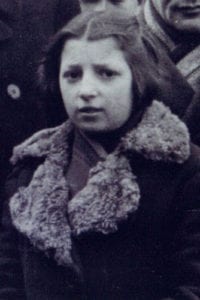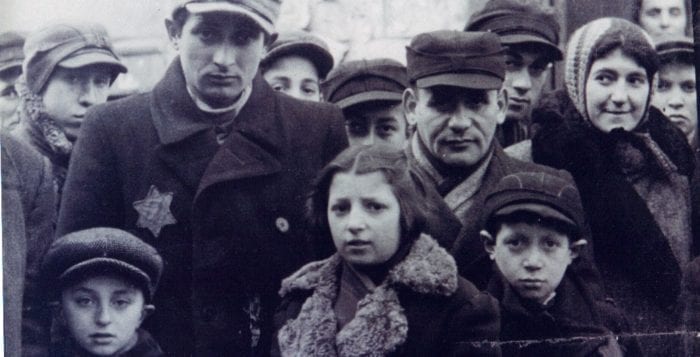‘Surviving one more day in the camps was spiritual resistance.’

Reviewed by Jeffrey Sanzel
Ruth Minsky Sender’s three memoirs — “The Cage,” “To Life” and “The Holocaust Lady” — are must-reads. The books chronicle the author’s life in Europe, from before World War II, through her inhumane imprisonment in the Nazi concentration camp system, and beyond. Sender is a writer of exceptional ability: vivid, introspective and yet always accessible. I have seen her speak and she is every bit as strong and present in person as she is on the page.
Now, the East Setauket resident has a new and unusual offering, a book of poetry, with the majority of poems written while she was in the Mittelsteine Labor Camp (1944–1945). Translated from the Yiddish by Rebecca Wolpe, the poems are raw and disturbing — as they should be. But underneath many of them is her mother’s motto: “While there’s life … there is hope.”
Miriam Trinh’s well-thought-out introduction shows the importance of “Jewish poetic creativity during the Holocaust as a reaction to Nazi oppression, persecution, and annihilation,” giving context to the writing as well as insight into Sender’s work. “This poetry,” writes Trinh, “was a direct reaction to her experiences during and after the Holocaust: the loss of her prewar identity, the realization that this loss was permanent and unrecoverable and the need to construct a new, postwar identity.”
In addition to the works written while she was in the camp, there are a handful of poems that were created in the 1950s and later. They are equally as important but are taken from a different perspective. All but two of the poems were written in Yiddish (those two in Polish), first on scraps of brown paper bags stolen from the garbage, later in notebooks.
She writes, “These poems were written in little notebooks while I was incarcerated in the Nazi slave labor camp in Mittelsteine, Germany, as prisoner #55082. I wrote them while hiding in my bunk. Every Sunday, I would read them aloud to the fifty other women living with me in the room. They were my critical and faithful audience. I endeavored both to depict scenes from our life and to give everyone a little courage and the will to continue. This was how we spent our Sundays, and anyone who had bit of talent did her best to bring a little happiness into our tragic lives.”
The notebook was given to her by the Nazi commandant after the girls were forced to perform at Christmas. They were told if they didn’t perform, all 400 Jewish girls would be punished. Sender read two of her poems (“My Work Place” and “A Message for Mama”) and somehow they touched the cold-hearted, pitiless Nazi commandant who presented her with the first book to record her verses.
Each poem is a delicate work of art. Some are a dozen lines, while others run to several pages. Given the cruel nature of the subject, it is difficult to comment. Needless to say, they are all vividly descriptive and fiercely honest.
“My Friend” explains the importance of writing. “Our Day” is a single day in the camp, from dreaming to sundown, and shows, even in the brutality, the glimmer of hope. “Greetings from Afar” addresses the day-to-day evil and sadism the prisoners relentlessly faced every moment. “Separation” expresses the pain of being split from her brothers. In “At Work,” the language depicts the harshness of the factory; in the clipped lines you can hear the merciless grinding of the machines.
“A Ray of Light” is just that: the courage to aspire to liberation in the midst of misery. “The Future,” one of the most complicated, looks at liberation from a different aspect: what will become of them and, even more so, where will their anger go upon being freed? It is a breath-taking piece.
“We Need Not Their Tears” faces the issue of where to go when returning to your home is a deadly option. “Where Is Justice?” is offered in two versions: one composed in the camp and the other written many years after. Both are the horrific story of a prisoner forced to beat another prisoner, driving the girl mad. In a book of challenging pieces, it is one of the most unsettling and haunting.
A later poem (1955), “Teaching Children Yiddish” is a celebration of the language that still exists, a symbol of persistence, with education being at its heart.
“While There’s Life …” is a volume that should be read and re-read by people of all faiths. It is a portrait not just of survival but of how one woman transformed her pain in humanity’s darkest hour into art … into life.
To order your copy of ‘While There’s Life …’ visit www.yadvashem.org and choose the Shop icon.





